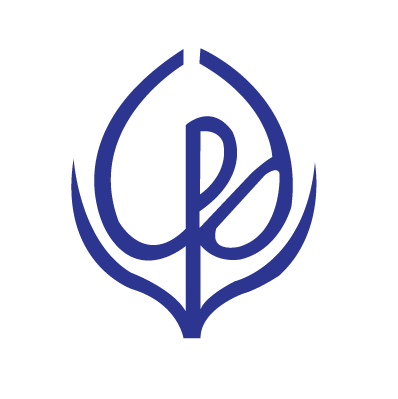Originally posted in The Financial Express on 1 February 2025

Crop production, especially rice and wheat, has increased at a steady state over the last several years (Table 6.1). During the first half of FY25, Aman was produced and harvested; however, no official data is available. The Ministry of Agriculture (MoA) has set a target of 22.6 million tonnes of Boro production for FY25, which is 7 per cent higher than the production of the last year (21.1 million tonnes). According to DAE, cultivation of Aman rice might miss the targeted acreage area due to consecutive floods during August 2024 over 23 districts during August 2024 (91 per cent cultivated till September, 2024). According to a newspaper report, Aman production is likely to be 1.3 million tonnes less than the targeted amount of 17.8. Given the shortages of Aman production and higher paddy/rice prices in the market, boro cultivation is likely to be at a higher acreage of land (targeted land: 50.70 lakh acre). According to BBS (2023), per capita rice consumption is declining in Bangladesh – from 367.2 grams in 2016 to 328.9 grams in 2022. However, growing pressure on the availability of rice in the market, even in normal production years, indicates that the use of rice at non-household levels, such as industrial raw materials, feed, etc., has been increasing. Hence, a detailed estimate of rice consumption at household and non-household levels is highly important to provide a better projection for the stakeholders on market demand for rice.
Import of Rice and Wheat. Given the shortages of production, the import of rice has significantly increased during FY25. During the first half of FY25, a total of 2.8 lakh tonnes of rice has been imported- mostly by the private sector. Given the unstable rice market, the government has planned to import as much as 7 lakh tonnes, which would be the highest since FY18. Despite the demand for wheat, as a close substitute for rice, imports during the first half of FY25 are almost half of last year, which further destabilised the cereal market. The dearth in the availability of rice as well as wheat has directly affected the rice prices at the retail level, with fine rice prices rising by 14 per cent, medium rice prices by 17 per cent, and coarse rice prices by 7 per cent compared to the previous year (27 January 2024 to 27 January 2025).
Procurement of Rice and Wheat. The government has set a target for the procurement of Aman paddy, parboiled rice, and Atap rice, which amounted to 10 lakh tonnes. This target is significantly higher than the procurement of Aman rice in FY24 (6.6 lakh tonnes). To achieve the target, the government has increased the prices of all types of rice by about 7-10 per cent per kg. Despite that, the procurement is far behind the targeted amount – to date, only 37.8 per cent of rice has been procured (3.78 lakh tonnes). Procurement is relatively better in case of parboiled and Atap rice (55 per cent); but it is significantly lower in case of Aman paddy (only 4.3 per cent). Despite the rise in procurement price, farmers and millers seemed to find the government-offered price (Tk.33-Tk.47) less competitive compared to the harvest market price, particularly in the case of Aman paddy (Tk.34.4 per kg). One of the major reasons for low procurement is the standards set for procured rice, such as the level of moisture content, the share of broken rice, etc., which farmers find difficult to comply with. These are found to be the reasons for selling rice at the open market. The cost of transporting rice to warehouses without assurances from the official that it will be purchased could raise both costs and risks for the farmers. Such conditionalities favour rice millers because they have the necessary facilities to comply with procurement conditions.
Public Stock of Rice and Wheat. Public food stock of rice and wheat is considered as a major indicator of domestic availability of food in a certain period, which provides signals for market price, requirement of import and increasing production in the following season etc. Figure 1 shows that both public and private stocks of rice and wheat gradually declined in recent months and reached their bottom in October-November 2024. Public food stock on 1 December 2024 was only 11 lakh tonnes, while private stock reached 10.95 lakh tonnes on 31 October 2024. Such a decline in food stock is mainly attributed to a fall in the stock of rice, while the stock of wheat remained steady state over time. A lower level of food stock is partly associated with – (a) a lower level of aus production harvested in July 2024 (7 per cent lower than the average); and (b) a moderate level of procurement of boro rice where procurement ended in August 2024.
Public Food Distribution System (PFDS). In the first half of FY25, PFDS is lower compared to the same period in FY24. A lower food stock forced the government to reduce the food distribution. As of December 2024, the total public stock of foodgrains stands at around 11.78 lakh tonnes. From July to December 2024, a total of 12.43 lakh tonnes of rice and 3.05 lakh tonnes of wheat were distributed through the PFDS channel. In January 2025, the stock decelerated to 12.2 lakh tonnes, of which rice is only 8.2 lakh tonnes.
The PFDS comprises two broad sectors: sales and non-sales (relief). Relief activities such as Food for Work and VGD programmes have seen a reduction in PFDS allocations (Table 6.5). While rice distribution has increased, there has been a significant decline in the distribution of wheat. However, the PFDS was observed at its peak from September to October to support the flood-affected people in 23 districts (FPMU, 2025).
Supply of Fertilisers. Domestic production of fertiliser has been increasingly facing challenges. Fertiliser production has been declining over the years – from 11.4 lakh tonnes in FY10 to 6.6 lakh tonnes in FY24. During October 2024, production was lowered to as low as 0.2 lakh tonnes, which was 1.0 lakh tonnes a year before (November 2023). The sluggish trend in fertiliser production has forced the government to import of fertiliser. However, the domestic supply of fertiliser has not been stable in recent months. However, fertiliser imports have also decreased. The fertiliser stock for the Boro season 2025 is about 20.8 lakh tonnes, which is significantly lower than the previous year (28.7 lakh tonnes). Failure to allocate a sufficient amount of dollars for the import of fertiliser, higher import costs and delays in import payments for fertiliser forced them to import less than the requirement. Because of the limited availability of fertiliser, farmers report about Tk.2-11 higher price than the official price for one kilogram of urea and non-urea fertiliser during this season.
Production Cost. Over the years, the cost of rice production has increased. The rising production cost is associated with higher costs of fertiliser, pesticides, seeds, irrigation, land rent, labour, machine-based farming, etc. A part of the escalated costs is associated with imported inputs where devalued taka against US Dollar (USD) increased the import cost.
It is not clear how much the farmers can accommodate the higher production cost during the sales in the harvest seasons. It is reported that farmers received Tk.1250-1320 per maund of paddy during the Aman season in November-December 2024, which is higher than the harvest season price of the earlier year. This indicates that farmers could partly accommodate the higher production cost through the rising harvest price. However, a higher retail price of rice, as evident in November 2024-January 2025, indicates that most of the margin in the rice supply chain is accrued by the distributing agents. A similar statement can be found in Table 6.7, where the farmer’s margin is lower than that of wholesalers and retailers.
Initiatives Undertaken by the Interim Government: The interim government has undertaken a number of measures to increase the production of rice and wheat as well as to stabilise the supply of fertiliser, etc. First, the government has tried to maintain fertiliser stock to avoid shortages until January 2025. It has tried to maintain supply in the pipeline to meet the requirement in boro seasons till April 2025. Second, the interim government has focused on streamlining fertiliser subsidies to increase efficiency and reduce wastage. A digital distribution system is being developed to ensure transparency and effective subsidy management on fertiliser distribution. This initiative is expected to save Tk2,500-3,000 crore annually. Third, the government plans to invest in modern storage and transportation infrastructure to better handle fertiliser. Real-time tracking and monitoring systems are also being introduced to ensure timely distribution of fertiliser. However, the government needs to take measures to improve production and reduce the production cost of rice and wheat.
Reform Measures in the Supply of Rice and Wheat. First, given the rise in demand for non-household consumption, particularly animal feed and industrial use, a proper estimation of annual rice demand is highly required. Such an estimation will consider not only the household-level consumption of rice as reported in HIES conducted by BBS; it needs to conduct a special survey targeting non-household consumption of rice and wheat.
Second, the production cost of rice needs to be reduced with a special focus on the reduced price of imported raw materials such as fertiliser and pesticides. Given the gas supply shortage, it would be difficult to supply domestic natural gas to the fertiliser factories as per their requirements. The government may explore long-term contracts with Middle Eastern countries to import fertiliser, which would reduce fertiliser costs. The leakages in subsidies for fertiliser and other inputs need to be reduced. It is important to monitor how the recently introduced digit tracking of fertiliser distribution system works to ensure efficiency in fertiliser distribution.
Third, lowering inflation in rural areas would help reduce the cost of labour in rice and wheat production. Special efforts should be made to lower food inflation in rural areas. Increased mechanisation in major farming activities, including sowing, transplanting, and harvesting, along with using day labourers, could help reduce production costs.
Fourth, the domestic procurement of rice and wheat needs special attention. The government should effectively utilise the special committee to monitor food supply and food prices to provide early warnings on domestic food stock in the public and private sectors and necessary initiatives to be undertaken on an urgent basis. A permanent commission to be led by a renowned agriculture economist could be set up to monitor and suggest concerned ministries on food production, import and market price-related issues.
Fifth, the procurement system, including setting procurement prices, needs to be done more efficiently. A specialised commission, as mentioned above, could do that work efficiently. The conditions for procurement indirectly facilitate large farmers and millers and discourage small-scale rice producers from selling their rice to the public channels. The procurement process needs to be revised and made transparent, open and accessible to all.
Sixth, a special effort should be made to increase foreign exchange reserves, which would slow down the devaluation of the taka against the USD. A better reserve would facilitate importers of fertiliser to supply the required amount of fertiliser during the season.
Dr Fahmida Khatun, Executive Director, Centre for Policy Dialogue (CPD); Professor Mustafizur Rahman, Distinguished Fellow, CPD; Dr Khondaker Golam Moazzem, Research Director, CPD; Mr Muntaseer Kamal and Mr Syed Yusuf Saadat, Research Fellows, CPD. moazzem@cpd.org.bd; avra@cpd.org.bd
[Abu Saleh Md Shamim Alam Shibly, Tamim Ahmed and Helen Mashiyat Preoty, Senior Research Associates; M Tanjim Hasan Khan, Resource Mobilisation Associate; Afrin Mahbub, Preetilata Khondaker Huq, Anika Tasnim Arpita, Jannath Sharmin Chowdhury, Anindita Islam, Abrar Ahammed Bhuiyan, Nuzaira Zareen, Ayesha Suhaima Rab, and Safrina Kamal, Programme Associates of CPD provide research assistance.]


